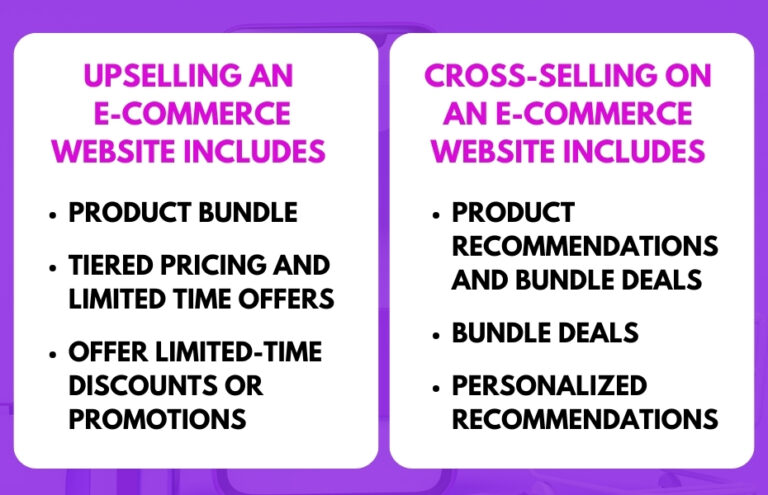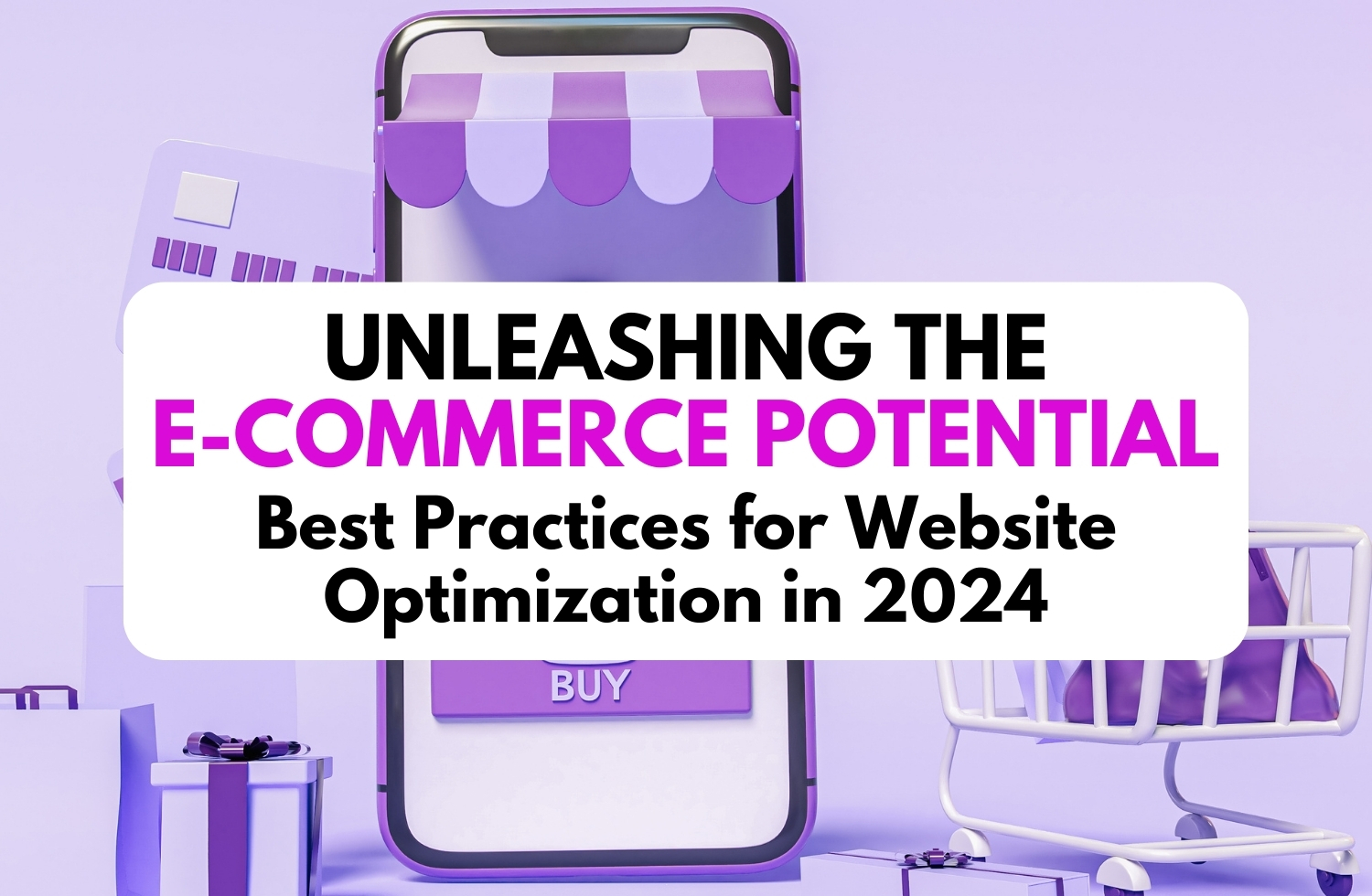In 2024 creating a successful e-commerce website for expanding reach and drive sales is challenging as consumers are becoming more and more aware and the competition becoming even fiercer than ever. So optimizing your website has become a necessity nowadays. An efficiently optimized e-commerce site not only enhances user satisfaction but also improves conversion rates and boosts overall business performance. It is crucial for improving user experience, increasing conversions, and boosting overall business performance.
Here Are the Best and Proven Practices for Optimizing Your e-Commerce Websites in 2024:
1. Mobile Optimization
Mobile commerce continues to dominate the e-commerce landscape, with a significant portion of online transactions occurring on smartphones and tablets. Therefore, optimizing your website for mobile devices is non-negotiable. With the increasing prevalence of mobile shopping, businesses must prioritize mobile optimization to cater to the growing number of mobile users. Here are some tips for mobile e-commerce optimization.
a) Fast Load Times: Mobile users have shorter attention spans and higher expectations for website loading times. Therefore, optimizing your website for fast load times on mobile devices is essential to prevent users from abandoning your site due to slow performance.
b) Optimized Content: Tailor your content for mobile users by prioritizing concise and scannable information. Keep paragraphs short, use bullet points and headings to break up text, and ensure that fonts are legible on smaller screens.
2. Personalization
Personalizing the shopping experience for your customers can be important for boosting your e-commerce store. It includes the practice of tailoring the shopping experience to meet the individual preferences, interests, and needs of each customer by leveraging data and technology to deliver highly relevant and customized content and product recommendations.
Here's How Personalization Can Help Optimize e-Commerce Websites:
a) User Data Collection: E-commerce businesses collect data from various sources, including website interactions, purchase history, demographic information as well as social media trends. This data can be really useful for providing insights into individual customer preferences, browsing habits, purchase patterns, and other relevant information.
b) Personalized Product Recommendation- Customer segmentation and predictive analysis can be really important for e-commerce websites to generate personalized product recommendations for each user. These personalized product recommendations can be displayed prominently on the website’s homepage, product pages and checkout based on each customer’s preferences and purchase history.
3. Streamlined Checkout Process
Streamline your checkout process by minimizing the number of steps and providing multiple payment gateways for convenience. The checkout process is a critical stage in the customer journey, and any friction or complexity during this phase can lead to cart abandonment and lost sales.
Here Are Some Strategies that Can be Implemented to Streamline the Checkout Process:
a) Simplified checkout process: It should consist of fewer steps to minimize the time and effort required for customers to complete their purchase. Ideally, the checkout process should include entering shipping information, selecting shipping options, entering payment details, and reviewing the order before completion.
b) Multiple payment options: Multiple Payment Provide customers with a variety of payment options, including credit/debit cards, digital wallets (e.g., PayPal, Apple Pay, Google Pay), and alternative payment methods for allowing them to choose the payment method that is convenient. This flexibility can help prevent checkout abandonment due to payment method restrictions or preferences.
c) Progress Indicators: Progress Indicators can help users understand where they are in the process and how many steps are remaining. This transparency can reduce anxiety and uncertainty, providing customers with a sense of control and confidence as they proceed through the checkout process.
d) One-Click Checkout: Implementing one-click checkout functionality can help customers complete their purchase with a single click using saved payment and shipping information for ease the repeat purchases. This feature can be effective for mobile users and can significantly improve conversion rates and customer satisfaction.
4. SEO Optimization
SEO Optimization is crucial for improving the visibility and ranking of an e-commerce website in search engine results pages (SERPs). Effective SEO optimization for e-commerce websites includes various strategies and techniques aimed at optimizing the website’s content, structure, and technical aspects to align with search engine algorithms and user search intent for driving organic traffic, increasing brand visibility, and ultimately, boosting sales and revenue.
Here Are Some Important SEO Optimization Strategies and Techniques for Improving the e-Commerce Website's Visibility and Attracting Targeted Organic Traffic:
a) Keyword Research and On-page Optimization- Identify relevant keywords and phrases by using keyword research tools that potential customers are likely to use when searching for products or services related to your business.
Optimize on-page elements such as product titles, descriptions, meta tags, headings, and URLs in a way to includes targeted keywords and provides clear and concise information about your products.
b) Page Speed Optimization and User Experience (UX) Optimization- Optimize your e-commerce website for fast loading times with the help of Google’s PageSpeed Insights and other tools minimizing server response times. Optimize images and multimedia content and leverage browser caching to reduce latency.
User Experience (UX) also indirectly impacts SEO performance. Ensure that your website is easy to navigate, with clear calls-to-action, intuitive search functionality, and a seamless checkout process.
5. Up-selling and Cross-selling
Upselling and cross-selling are both powerful tactics for optimizing e-commerce websites and increasing average order value (AOV). Both techniques involve offering additional products or services to customers during the purchase process,

a) Up-selling- Up-selling involves offering customers to purchase a more expensive or premium version of the product they are considering. The benefits of the upgraded product and how it is better at meeting the customer’s needs and preferences are highlighted.
Upselling an e-commerce website includes-
Product Bundles- This includes combining the main product with the related accessories or complementary items at a slightly higher price point.
Tiered Pricing and Limited Time Offers- These include Presenting multiple versions of the same product with varying features offering additional benefits at higher prices.
Offer limited-time discounts or promotions on upgraded versions of products to create urgency and encourage customers to take advantage of the deal.
b) Cross-selling- Cross-selling involves recommending complementary or related products that are related to the what customer is already purchasing. Suggesting related and additional products cross-sell aims to increase the overall value of the customer’s purchase and motivate customers to add more products to their cart.
Cross-selling on an e-commerce website includes-
- Product Recommendations and Bundle Deals- Frequently bought together items on product pages, cart pages, or during the checkout process to encourage additional purchases.
- Bundle Deals- This Includes offering a bundle deal which includes the main product along with the main product and related accessories and complementary items to motivate customers to add more products to their cart.
- Personalized Recommendations- Provide product recommendations based on customer’s data and browsing history, preferences and past purchases.
6. Effective Pricing
Effective pricing is also an important component of e-commerce website optimization as it can directly impact sales, revenue, and profitability. It can help e-commerce businesses attract customers, increase conversion rates, and maximize profits.
Here Are Some Strategies for Optimizing Pricing on e-Commerce Websites-
a) Segment Pricing – Tailor pricing and promotional offers to specific customer segments based on factors such as geographic location, purchase history, loyalty status, or demographic information for maximizing revenue and customer satisfaction.
b) Psychological Pricing- Psychological Pricing techniques such as charm pricing for example ending prices with .99 or .95) bundle pricing for example offering discounts for purchasing multiple items together for changing the customer perception and increasing sales.
c) Discounts and Promotions- Offer discounts, promotions, and special offers with different types of discounts such as percentage discounts, dollar amount discounts, buy-one-get-one- and promotional strategies such as flash sales, limited-time offers, and holiday promotions for increasing conversions.
d) Subscription Pricing- You can also offer customers to special services for a recurring fee. It can increase customer loyalty and encourage repeat purchases.
Conclusion- Optimizing your e-commerce website in 2024 requires an effective approach to staying ahead in the competitive e-commerce landscape of 2024. By implementing these above practices you can drive higher engagement, conversions, and customer satisfaction on the e-commerce websites. It can also help e-commerce businesses to provide seamless and comprehensive shopping experiences to their customers.
Let's schedule a meeting and discuss how we can tailor our services to meet
your specific needs and contribute to your favorable results.

